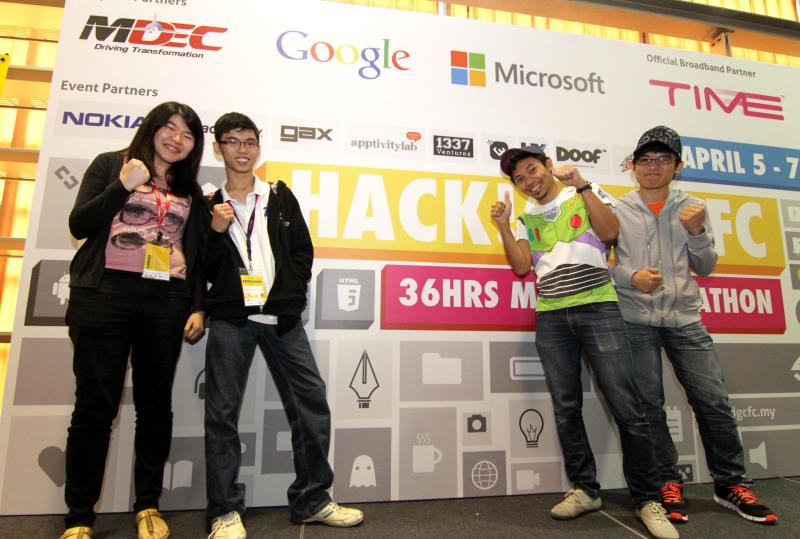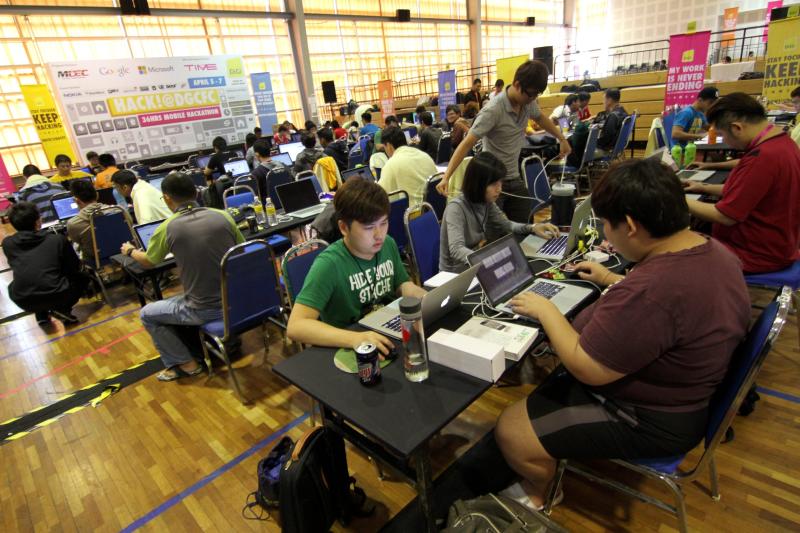By AMANDA SOO
alltherage@thestar.com.my
App developers took to a weekend together to create prototypes
FOR 36 hours non-stop last weekend, about 200 mobile app developers and designers gathered at DiGi’s headquarters in Shah Alam with one common goal in mind – to create the best app that would bring Malaysians together.
Organised as part of the second phase of the DiGi Challenge for Change (DGCFC) programme, the three-day “hackathon” saw the seven winning ideas from the earlier Ideation Phase transformed into apps.
“Hackathon is a place for software developers to gather and work on a project together,” said DiGi head of communications and corporate responsibility Joachim Rajaram.
DGCFC aims to engage Malaysians to develop innovative solutions that benefit society. “The DNA of DGCFC has always been the same, and that is to unearth new ideas and realise them,” explained Joachim.
This year’s challenge focuses on connecting the community through mobile apps with the theme “Bringing Malaysians Together, One App at a Time.”
The challenge has been running for four years, but this is the first time a hackathon was organised as part of the Application Development Phase of DGCFC.
“Apps should not be a best-kept secret,” said Joachim. “This Hackathon is a platform for developers to share their knowledge and learn from one another.
“But creating the app is just half the job. Forming the idea is a very important part of the process too.”
The challenge is divided into five categories of innovation – Discovering Together, Healthier Together, Working Together, Learning Together and Sharing Together.
Originally, there was only to be one winner from each category. But with close to 2,000 app ideas coming in, Joachim said there were simply too many that stood out. After much deliberation, the judges decided to award two additional entries deemed deserving of recognition along with the final list of category winners.
Mohd Eskandarian Mirza is one of the two wildcard winners. The 29-year-old web designer came out with the idea for “Futsal 5ive”, an app that allows users to join existing futsal teams and organise inter-neighbourhood team matches, and even serves as a scoreboard for all competitive Malaysian Futsal Teams. “It’s like social media for futsal,” he said.
IT student Low Chin Leong, 21, won the Discover Together category for “Classic New Game”, which transforms traditional Malaysian games into mobile games and brings people together to compete from their mobiles.
“I thought of this idea because during my childhood, I didn’t play many traditional games,” said Low, who like many of his peers spent more time on computer games. “I thought this would be a good app to introduce games like congkak and gasing to those who haven’t played them.”
Phase two
In the challenge’s second phase, developers get to pick one of the seven winning ideas and turn it into an app.
At the end of May, the panel of judges will select the seven best apps (one for each winning idea) and award each winner RM25,000.
Eskandarian and Low were present at the Hackathon as both Ideation Phase winners and app developers.
Even for the other Ideation Phase winners who are not developers, they still have a stake in this phase of the challenge as ultimately, the one recognised by the judges to have the best idea turned into a mobile app will win the Prime Minister’s Innovation Award and RM25,000.
Michelle Fung, 24, had a lot of fun getting to know some of the developers at the Hackathon and communicating her idea to them. She won the Learning Together category for her “Earth’s Green Heroes” idea, which encourages recycling by making it fun through games and rewards based on users’ recycling habits.
“Recycling doesn’t have to be boring,” she said. “My idea is to integrate pictures, YouTube videos and 9GAG to reach out to a wider audience in encouraging them to take up recycling.”
For 17-year-old Nicholas Khooi, his idea for “Smart Reminder” was inspired by his own forgetfulness when it comes to medication.
“There was this instance when I was sick and my mum would keep scolding me for forgetting my medicines,” said the student of SMJK Shing Chung in Sungai Siput, Perak. “I was sure many others face the same problem.”
Therefore, he thought of “Smart Reminder” as an easy-to-use reminder tool for ill patients to self-medicate punctually.
“These aren’t just commercially viable ideas,” said Joachim. “They are ideas that can bring the community together. If we create an app that connects to people’s everyday lives, they are more likely to use it.”

Four of the seven DGCFC Ideation Phase winners. From left to right: Michelle Fung, Nicholas Khooi, Mohd Eskandarian bin Mirza and Low Chin Leong.



Tell us what you think!